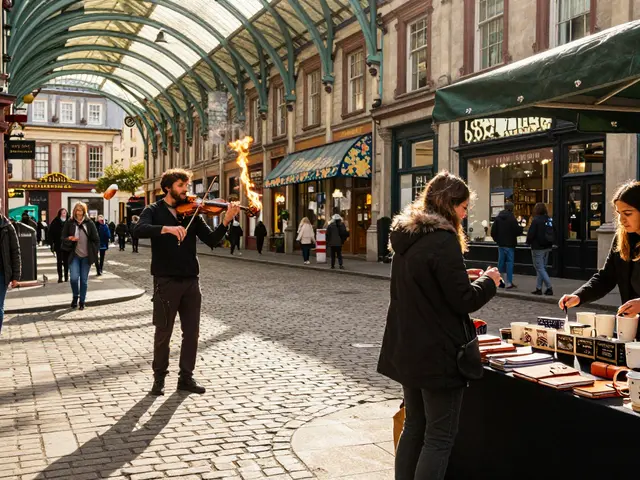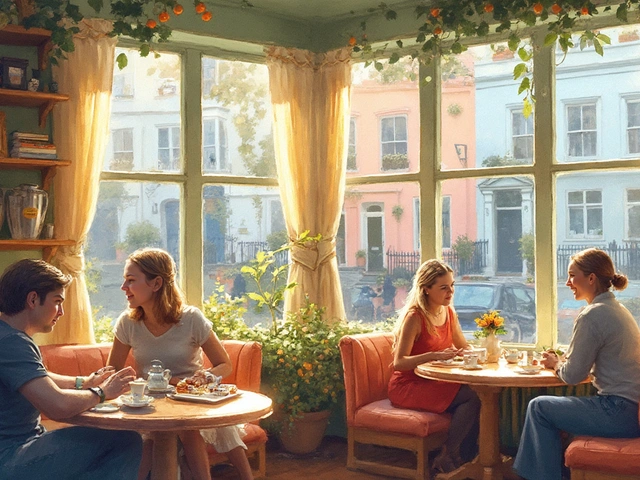There’s something almost magnetic about the heartbeat of London, and nowhere does it pulse louder than beneath the looming gaze of Nelson’s Column in Trafalgar Square. Stand here at any time of day or night, and you’ll see the whole city moving through: hurried commuters darting to Charing Cross, tourists angling for the perfect photo with the famous lions, street performers from Covent Garden drum circles, protesters with their placards, and locals sipping coffee from Pret or Kaffeine. Nothing captures the living fabric of London quite like this square. It’s more than a meeting place or a backdrop for selfies—it’s a testament to London’s mixed-up, constantly shifting heritage, and it’s woven into city life so tightly, it’s almost impossible to imagine the capital without it.
The Story Behind the Stones
Trafalgar Square isn’t just a London tourist tick-box—it’s rooted in the nation’s tangled past. Back before the crowds and pigeons, this land was known as the Royal Mews. George IV had the big idea in the 1820s—let’s clear the stables, bring in John Nash and later Charles Barry, and give Londoners a monumental public space. The square became a living memorial to Britain’s win at the Battle of Trafalgar in 1805. That’s Admiral Lord Nelson gazing down above you from his 52-metre perch, and if you’re ever feeling small, remember he’s up there for a reason: that battle was a game-changer for the British Navy, and London wears its scars and victories openly.
Look beyond the postcard image—you’ll find a space that has always belonged to the people. It’s seen suffragettes chaining themselves to the railings, anti-war marches that echoed through Westminster, and countless celebrations, from VE Day in 1945 to World Cup parties and London Pride. If it’s big in London, you can bet it’s played out in Trafalgar Square. The tradition continues today: witness the silent climate vigils, impromptu breakdance circles, and the electric buzz whenever a London team clinches a title.
Landmarks, Lions, and a Little Local Knowledge
Anyone can spot the towering column or the photogenic bronze lions, each weighing over seven tonnes. But those in the know will tell you the lions weren’t added until nearly 30 years after the square’s big opening. Sculptor Sir Edwin Landseer, more used to painting than carving, supposedly modelled their paws more like cats than real lions. That’s the beauty of London’s monuments—they’re full of tiny oddities if you know where to look.
It’s not just about the obvious stuff. Trafalgar Square is ringed in history: the National Gallery sits on its north side, packed with masterpieces (the best bit—it’s free, and you could lose hours gazing at Van Gogh’s sunflowers). St Martin-in-the-Fields, on the east, hosts regular lunchtime concerts. Just around the corner, London’s quirky Canada House and South Africa House lend the square an international feel. And don’t forget the “Fourth Plinth”—the only one without a permanent statue. It’s a revolving door for bold contemporary art. No two visits are ever quite the same, because the art keeps changing—and sometimes, the opinions do too.
Daily Life and Londoners’ Rituals
For locals, Trafalgar Square can be part of your everyday, not just a stop on your city tour. During Diwali, the fountains glow in brilliant colours for the annual festival, with dancing and food stalls spilling into every corner. On St Patrick’s Day, the place goes emerald and fills with laughter and folk tunes. The Christmas tree tradition is pure London—with Norway sending a mighty spruce every year as thanks for support during WWII. Check it out one December evening and you’ll find carollers adding warmth to the usual London drizzle.
But it’s not all grand events. Early mornings reveal suited finance types hustling towards the City, local college students sketching statues for assignments, and shoppers crossing over to Seven Dials or Regent Street. The square is fully pedestrianised these days, making it a lot more pleasant to wander. Got a quick lunch? Grab a Cornish pasty from a Greggs nearby or try Dishoom for an Indian twist—then people-watch from the base of the fountains. If you’re cycling, Santander Cycles docking points can be found close by, and tube access is a breeze from Charing Cross, Leicester Square, or Embankment.
Tips, Surprises, and “Did You Knows?”
Keen to make the most of your visit—or just impress guests when friends drop by? Here’s a handful of hands-on tips locals swear by:
- The best photos of the square are shot from the east steps at sunrise, when the City skyline gives a pinkish glow—almost no tourists, only London waking up.
- At New Year’s, Trafalgar Square packs with revellers despite the official fireworks shifting to the London Eye. Even if you can’t see the display fully, the atmosphere here can’t be beat.
- Feeling creative? Check out the “London Plinth” mini versions on Instagram—locals love reimagining what could stand atop the Fourth Plinth.
- The Café on the Square offers quick bites and a roof terrace—perfect for a rare London sunny spell (which, trust me, do exist sometimes!).
- The fountains are more than decorative—modern upgrades added water recycling and LED lighting, and they’re programmed to shut off for major events to keep things safe.
- Want a perfect bench for lunch? Go north, towards the National Gallery entrances, for quieter spots and the best city views without the crowds.
One more quirky fact: the “nose” hidden on Admiralty Arch just off the square. Installed by artist Rick Buckley as a prank in the 1990s, it’s easy to miss but rewarding to hunt—a quiet reminder that London is always up for a bit of fun, even in its grandest spots.
The Square by the Numbers
Now and then, it’s fun to look past the history and soak in the sheer stats that shape city life. Here’s the kind of trivia you’ll want for your next pub quiz:
| Feature | Details |
|---|---|
| Nelson's Column Height | 52 metres (171 feet) |
| Year Completed | 1843 |
| Weight of Each Lion | Over 7 tonnes |
| Number of Annual Events | Over 30 major events annually |
| Distance to Big Ben | Approx 800 metres |
| Distance to Piccadilly Circus | Approx 500 metres |
| Fountain Water Capacity (each) | Approximately 80,000 litres |
| Typical Crowds per Major Event | Over 20,000 visitors |
When you walk through the square, it’s easy to get swept up—literally, if you happen to hit a World Cup winning night. Check out the official Mayor of London website for up-to-date event details or pop by at midday on a weekday, when you’ll catch artists, free concerts from St Martin’s, and food vans that don’t stick to usual boring sandwiches.
And there’s no need to wait for a festival: the best magic happens in the day-to-day. Maybe it’s catching the red double-deckers sweeping round the roundabout, or overhearing a heated debate about statues in one of the nearby bookshops. Trafalgar Square is always changing, always alive, and always ready for its next story to unfold—so whether you’re just passing by or building your daily routine around it, this place gives the kind of London welcome you can’t forget.


